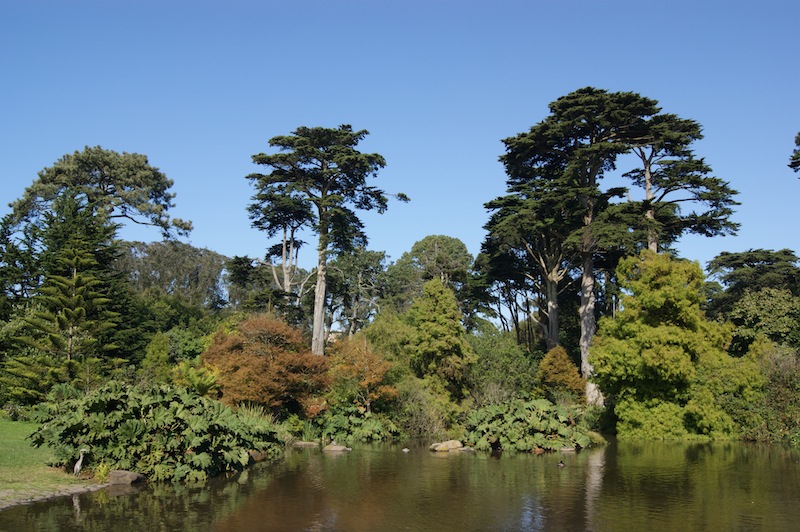We never got round to crossing the Golden Gate Bridge on our visit to San Francisco, making do instead with a catamaran trip across the bay to the city’s finest landmark. However, we did cycle round the park that bears its name.
Golden Gate Park is represented by a big green blob on maps of the city, and is far too big to ignore at just over three miles long and half a mile wide. Packed with things to do, the only way of seeing all it has to offer is to hire bikes.
The park was created by engineer William Hammond Hall and gardener John McLaren out of unpromising, windswept sand dunes along the Pacific coast. Work went on throughout the 1870s to tame the landscape, with workers planting tens of thousands of trees and plants from around the world to help stabilise the soil and create a park the city could be proud of.
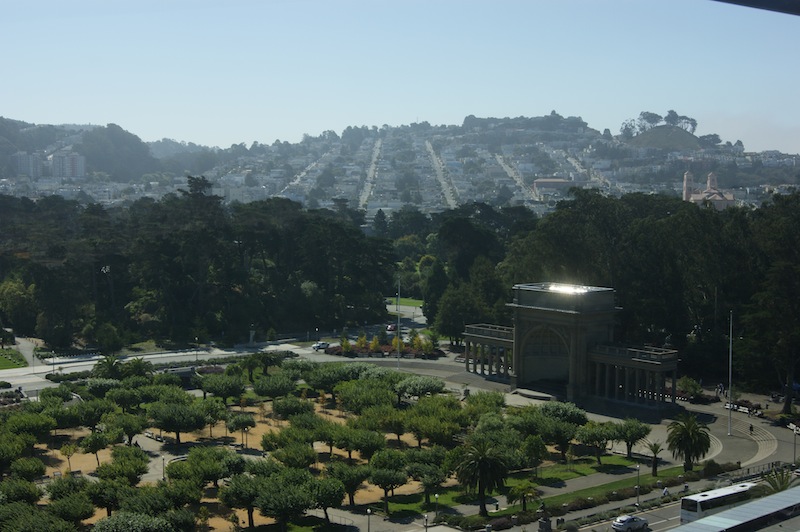
Today is has formal gardens, wild zones, sports facilities, museums and an observation tower. The latter was part of the modern, fascinating and controversial de Young Museum building, designed by architects Jacques Herzog, Pierre de Meuron and Fong + Chan. It may be the city’s leading fine arts museum, home to American art, textiles and costumes, but fine art has never been our thing so we steered clear of the exhibits and made do with the building itself. We took the lift up the twisting tower for one of the best views of San Francisco available in the park, and then refreshed ourselves in the excellent, if busy, cafe back on the museum’s ground floor.
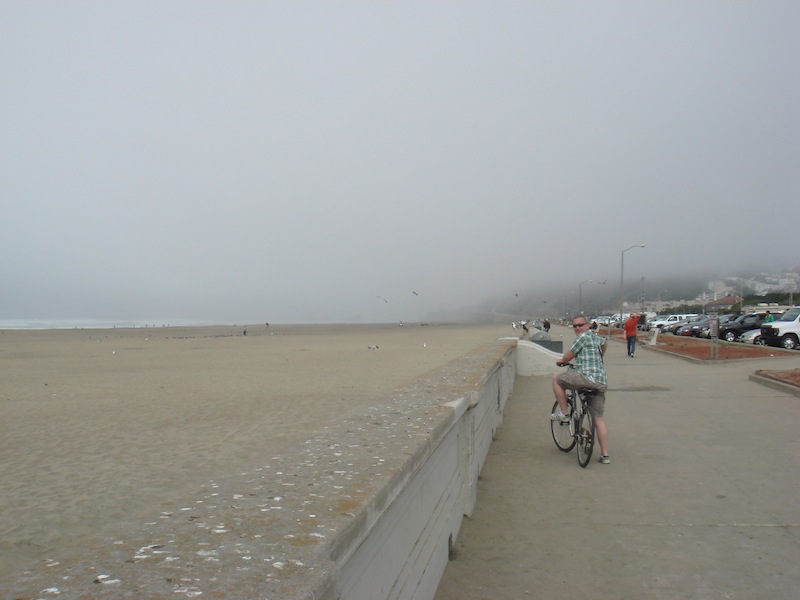
Outside, we walked through the landscaped Music Concourse to another interesting building, the California Academy of Sciences. It was refashioned by the celebrated architect Renzo Piano a few years back, and is a leading natural history museum, but we didn’t have the time to venture inside. Instead, we jumped on our bikes and rode deeper into the park. We passed the prehistoric Tree Fern Dell and the vibrant Rhododendron Dell and later found ourselves at Stow, the largest of the park’s man-made lakes, with the island of Strawberry Hill at its heart.
We resisted the temptation to hire a boat and cycled on in the warm sunshine, taking in gentle rolling hills and sports pitches.
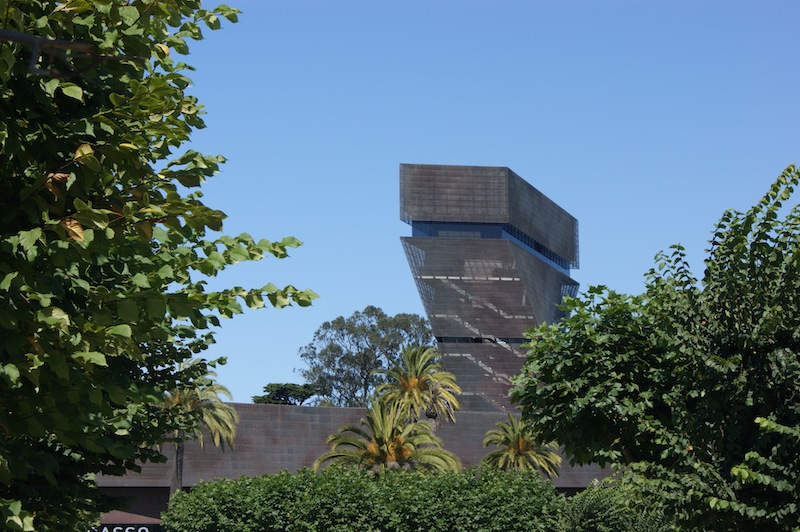
At the Pacific coast, the fog rolled in eerily, the wind blew and the temperature fell through the floor. It was as if we’d arrived on an entirely different day. The beach and the promenade were deserted and gloomy, like a depressed English seaside resort in autumn. Every now and again, the two windmills that stand on the edge of the park disappeared into the mist as the banks of fog came and went.
The mills were built at the start of the 20th century to pump water throughout the park but were decommissioned a few decades later. Now restored, one sat plump in the middle of a pretty and colourful flower garden.
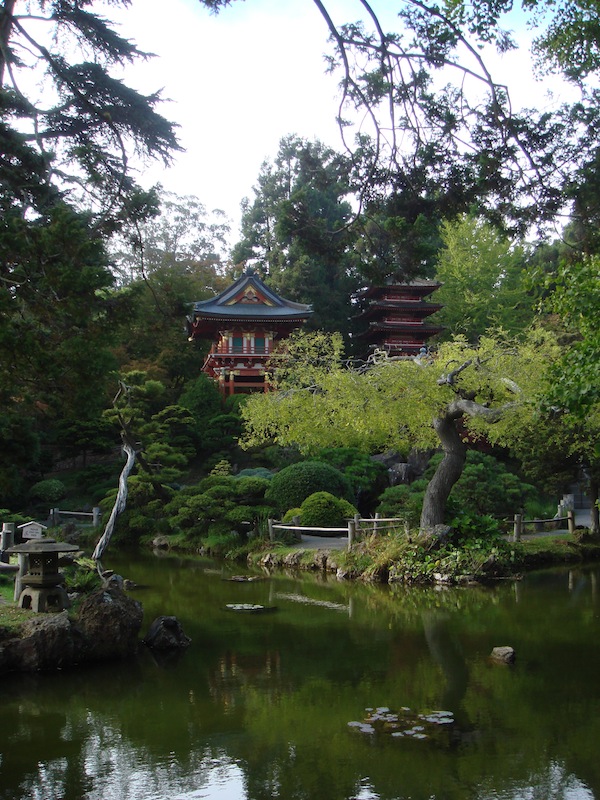
We jumped back on our bikes and cycled inland, keen to find the sun again. We also found the bison paddock, saw a lot of paddock but no bison, and arrived at the San Francisco Botanical Garden. While it will never rank as one of the greatest of botanical gardens in the world, we enjoyed discovering some of the several thousand plant species showcased in a wide range of habitats across its 55 acres.
We left what turned out to be the highlight of the park until last – the Japanese Tea Garden. And it was a real gem. Designed by Makoto Hagiwara for the California Midwinter International Exposition of 1894, it was exquisite, beautifully crafted and as relaxing as any garden can be.
We wandered along its paths, discovered the Drum Bridge and tea house, pagoda and Zen garden, and took far too many photos – photos that never quite managed to capture the magic of the place…

